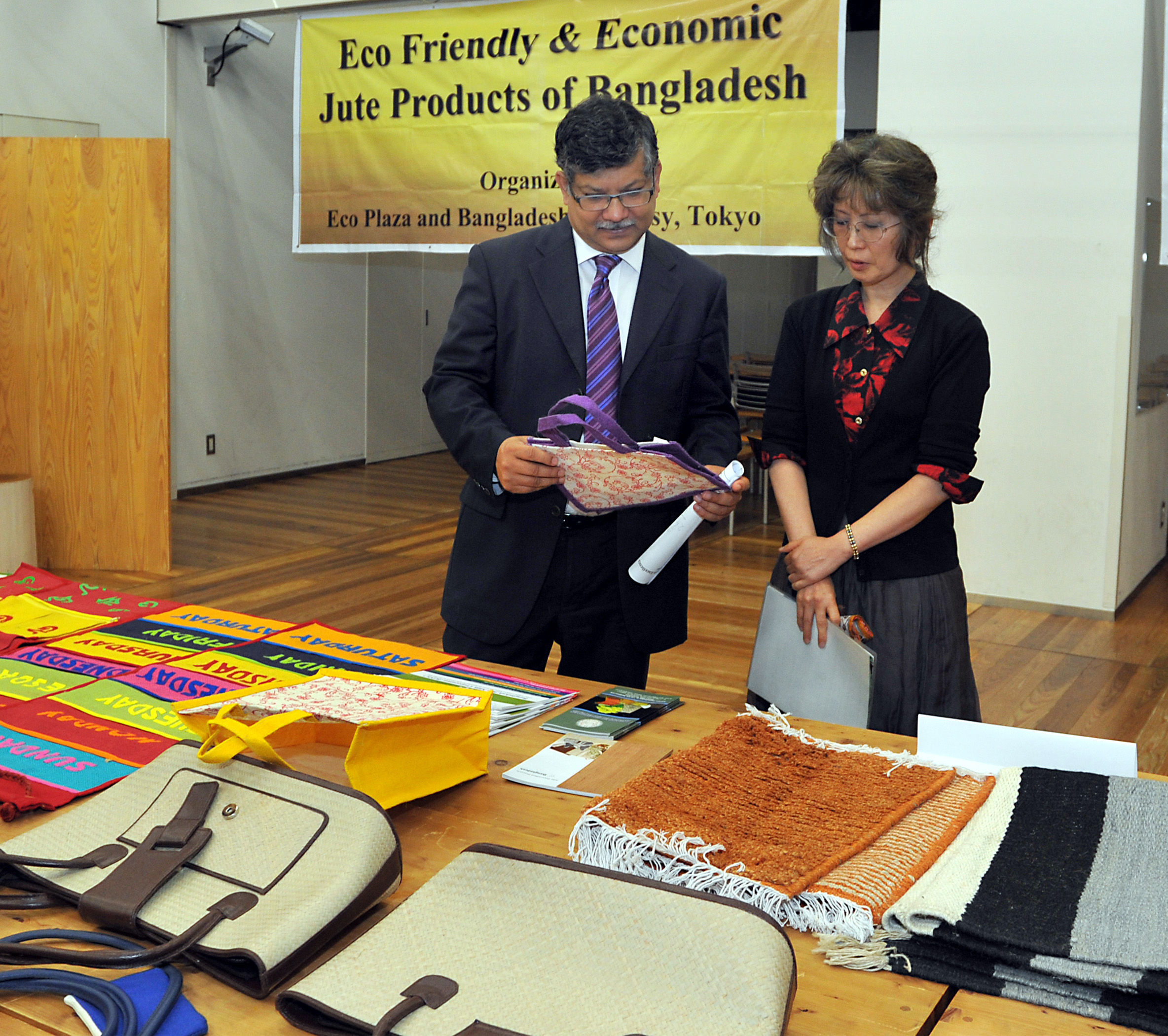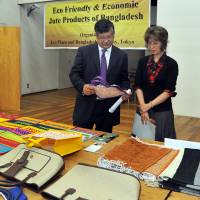Jute is receiving renewed attention as a versatile and eco-friendly material. As a major jute producer, Bangladesh shared some of its expertise with the commodity at a recent seminar in Tokyo.
The event took place on the evening of June 26, in the fourth session of a series of educational programs promoting eco-friendly lifestyles. The programs are co-organized by the Minato City Eco-Plaza and The Japan Times, in collaboration with various embassies in Tokyo. The programs look to educate people on various environmental ideas and eco-friendly lifestyles from around the world through different embassies, which serve as windows into each country.
This time, the event was held in collaboration with the Embassy of the People's Republic of Bangladesh.
Located in South Asia, Bangladesh has an area of 147,570 sq. km., with the Bay of Bengal to the south, borders with India in the west, north and east and one with Myanmar in the southeast. It has a population of over 160 million, making it the world's eighth-most populous, and one of the most densely populated, countries. The country gained its independence from Pakistan in 1971.
"In the 1950s and 60s, jute brought in foreign currency in what was then East Pakistan and is today Bangladesh. With the advent of synthetic products, such as plastics, the decline of jute began in the 1970s and continued until the '90s," said Bangladesh Ambassador Masud Bin Momen at the beginning of the event.
However, in recent years, with raising environmental awareness and the development of new and diversified jute products, the market is again opening up for jute.
"Jute is making a comeback," the ambassador said.
Following the ambassador's remarks, Mohammad Hasan Arif, commercial counsellor of the embassy, delivered a presentation to introduce Bangladesh and its jute production activities.
"Jute is a natural fiber produced from plants of the genus Corchorus. Due to its shiny color, jute is also called golden fiber," Arif explained.
For centuries, jute plants have been mainly cultivated in the region, and today Bangladesh is the second-largest producer after India. According to Statistics Japan and based on data by the U.N. Food and Agriculture Organization, Bangladesh's jute production was around 1.5 million tons in 2012, which accounted for around 40 percent of world jute production that year.
Although processing jute is labor intensive, production is very eco-friendly.
"Mature jute plants are harvested, soaked in water and the fiber is extracted from the stem," explained Arif. "The whole process is environmentally friendly, as jute is biodegradable," he said.
According to a video used in the presentation, jute geo textiles have a high moisture absorption capacity, good drainage properties, are flexible and are commonly used to prevent soil erosion and landslides by placing them along river embankments, roadsides and hillsides. Also, the carbon dioxide assimilation rate of jute is several times higher than that of trees.
Traditionally, jute was used for rope, twine, sacks, packaging materials and a few handicrafts. But the picture has greatly changed, and jute is now used in a wide range of modern products ready for domestic, commercial and industrial use from fashion and car manufacturing to transport engineering and paper production.
Jute fiber blended with other natural and synthetic fibers can create stunning and lustrous fabric that is unparalleled in its esthetic appeal, durability and cost effectiveness. Jute fiber can also be used to create high-quality pulp and paper, thus saving forest resources.
The seminar, which was carried out in fluent Japanese, attracted 42 people interested in jute from Minato Ward and beyond.
The participants asked questions about the transition of jute production and exports and on its industrial or medical uses.
"Jute and jute products can play an important role in the future," the ambassador said.
After the presentation, the participants were able to examine a variety of jute products, which were brought from Bangladesh by the embassy for the event. On display were bags, shoes, table centerpieces, wall hangings and floor coverings in different sizes, shapes and colors.
This feature reports on a series of environmental educational programs co-organized by Minato City Eco-Plaza and The Japan Times in collaboration with embassies in Tokyo. For more information, call 03-5404-7764, or visit www.minato-ecoplaza.net.




















With your current subscription plan you can comment on stories. However, before writing your first comment, please create a display name in the Profile section of your subscriber account page.